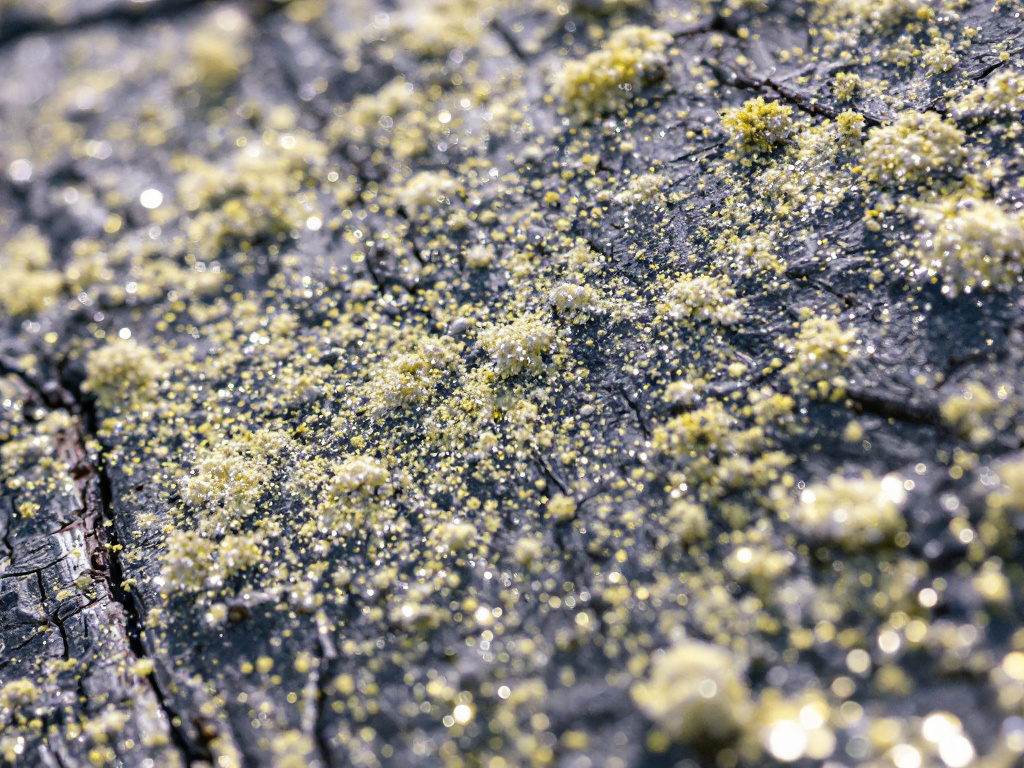If you’ve ever walked out to your car in spring and found it coated in a yellow-green dusting, you already know the culprit: tree pollen. In North Florida, where forests frame neighborhoods and backyards alike, that pollen isn’t just a nuisance—it’s a health issue. A new University of Florida study sheds light on how the very trees that keep our communities shaded and beautiful may also be driving allergy problems in places like Clay County.
Why Trees Matter—and Why They Make Us Sneeze
Trees are more than scenery here. They cool our streets in Middleburg, soften traffic noise along Blanding Boulevard, and provide habitat for songbirds that brighten early mornings in Green Cove Springs. But trees also produce pollen—tiny reproductive grains that float on the wind in staggering numbers.
Not all pollen is equal. Trees that rely on insects like bees to spread pollen don’t release much into the air. But wind-pollinated trees, such as pines and oaks—the very species that dominate yards and pastures in Clay County—release clouds of it each spring. That’s when allergy sufferers feel it most, with watery eyes, sneezing, congestion, and in severe cases, asthma flare-ups.
Counting Allergens, One Tree at a Time
Researchers use a tool called the Ogren Plant-Allergy Scale (OPALS) to rank trees from 1 (least allergenic) to 10 (most allergenic). Female trees of some species, like waxmyrtle and holly, rank low because they don’t release pollen. Their male counterparts, however, rank much higher, producing the pollen that coats ponds, porches, and pickup trucks across North Florida each spring.
Some Clay County favorites are friendlier to allergy sufferers than others. Southern magnolia, with its glossy leaves and fragrant blooms, scores a mid-level 5. Tulip poplar and sparkleberry score even lower, meaning they’re less likely to irritate sinuses. On the other hand, laurel oaks and river birch rate high, though birch at least has a short blooming season.
Weather’s Role in Pollen Season
Anyone who works outside—whether tending cattle in Keystone Heights or mowing lawns in Oakleaf—knows pollen isn’t the same every year. Weather plays a major role. A hard freeze can delay pollen release, while a mild winter, like the ones Florida often sees, can kickstart allergy season as early as January. Windy days scatter pollen farther and wider, while rain offers temporary relief by knocking pollen from the air.
Why This Matters in Clay County
With nearly one in four Clay residents under 18 and another 17 percent over 65, the county has large groups vulnerable to allergies and asthma. Families with kids in 4-H programs, seniors tending backyard gardens, and commuters facing 30-minute drives with windows down are all affected by seasonal pollen. Allergies cost Americans $18 billion a year in health expenses—lost workdays, doctor visits, and medication. For a fast-growing county like Clay, balancing tree cover with community health is more than an academic concern.
What Residents Can Do
The UF researchers suggest practical steps:
Choose low-allergy trees when planting, favoring species with OPALS ratings of 5 or less.
Opt for female trees in species where male trees produce heavy pollen.
Plan around pollen season: Dry clothes indoors, limit outdoor chores on windy days, and shower after working outside.
Maintain filters: Regularly replace air conditioner and air purifier filters during peak season.
For Clay County residents, the message is clear: trees are vital to our way of life, but so is smart planning. Selecting the right trees for yards, parks, and new developments can help reduce the springtime allergy burden without sacrificing the shade and character that make North Florida living what it is.
As UF’s research reminds us, the trees around us are both friends and foes. With a little foresight, Clay County can keep enjoying the beauty of its urban forest—while sneezing a little less.
Category: Clay
-

When Shade Turns Sneezy: How Clay County’s Trees Affect Allergy Season
-

“Embracing Tropical Elegance: A Local’s Guide to Growing Calatheas in Clay County”
Image generated by flux-ai.io & content generated by ChatGPT Version 4o-mini
Bringing Beautiful Calatheas Home: A Guide for Clay County Residents
Residents of Clay County, Florida, have likely noticed the vibrant and unique plants known as Calatheas adorning homes and businesses. Recently, researchers Jianjun Chen and Dennis B. McConnell published a study that sheds light on how to cultivate these stunning plants successfully. Let’s explore their findings and how they might inspire local gardeners and plant enthusiasts here in Clay.
What is a Calathea?
Calatheas are tropical plants that belong to the Marantaceae family. Known for their eye-catching leaves, which can be smooth or hairy and come in various colors and patterns, they’re often used as ornamental plants. While they originally hail from Central and South America, their beauty has made them a favorite in homes across the U.S., including right here in Clay County.
Why Should You Care?
If you’re a resident of Clay, you might be interested in adding some greenery to your home or workplace. Calatheas not only brighten up a space but also help improve indoor air quality. Plus, with their vibrant patterns, they can be the perfect conversation starter or a lovely addition to a family gathering.
Key Findings from the Study
-
Growing Conditions: For those looking to grow Calatheas, it’s essential to understand their needs. These plants thrive in shaded environments—think of how a canopy of trees provides shelter on a hot summer day. They prefer temperatures between 70°F and 90°F, making them a great choice for indoor growing in our warm Florida climate.
-
Watering and Humidity: Calatheas enjoy high humidity, which is something we can often find in our humid Florida summers. The researchers recommend keeping the relative humidity between 50% and 100%. This means you might want to mist your plants regularly or place them in naturally humid areas like bathrooms.
-
Soil and Fertilization: The study emphasizes using a special potting mix, typically made from peat and pine bark, which helps retain moisture without becoming soggy. Fertilizing is also crucial, and the researchers suggest using a balanced fertilizer to ensure the plants get the nutrients they need.
-
Common Issues: Like any plant, Calatheas can face challenges. The study outlines problems such as leaf spots and wilting. For example, if you notice dead spots on the leaves, it might be due to high levels of fertilizer. Understanding these issues can help you take better care of your plants and keep them healthy.
Local Relevance
With Clay County’s interest in agriculture and natural resources, the cultivation of Calatheas presents an exciting opportunity for local gardeners. Whether you are part of a 4-H club or simply enjoy gardening on your own, these plants can be a fun project. They can also attract attention at local farmers’ markets or gardening clubs, showcasing the beauty of tropical plants in our community.
Final Thoughts
As you consider bringing Calatheas into your home, remember that they require a little extra care, but the reward is worth it. Their stunning appearance can transform any space and connect you with the lush beauty of tropical flora. Whether you’re a seasoned gardener or a newcomer to plant care, the insights from this study can help you cultivate a thriving indoor oasis right here in Clay County.
So, grab your pots, find a shady spot, and start your journey into the enchanting world of Calatheas!
References
ENH1030/EP285: Cultural Guidelines for Commercial Production of Interiorscape Calathea. (n.d.). Ask IFAS – Powered by EDIS. https://edis.ifas.ufl.edu/publication/EP285
-
